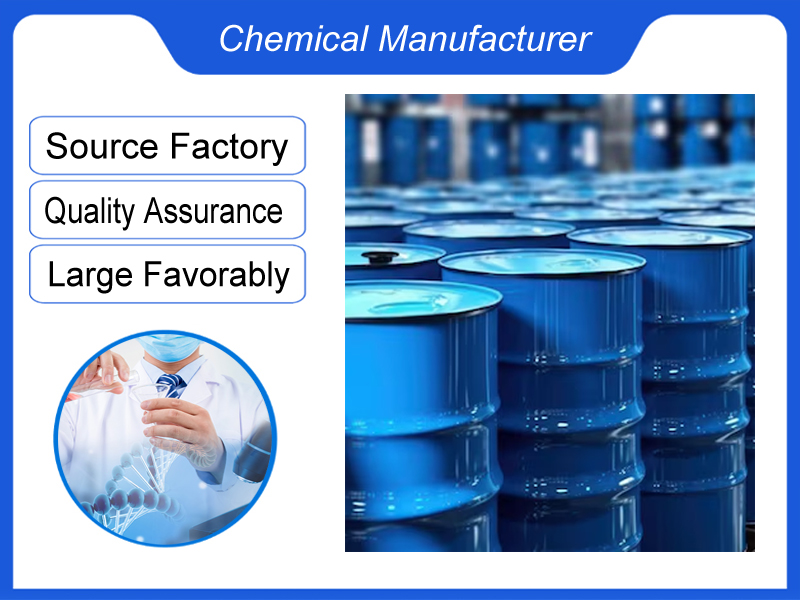
Methyl isobutyl ketone
We are a manufacturer based in China. We specialize in providing high-quality Methyl isobutyl ketone for industrial clients across various sectors. Whether you need chemicals consultation or technical support, our team is here to help.
Category:Paint chemicals Own Brand:MT /MOQ:100KG /From China/ B2B only.
Introduction
CAS No. 108-10-1
Content 99%
Packing 165kg/drum
| 4-Methyl-2-pentanone | |
| Synonyms | MIBK Hexone Isopropylacetone 4-Methyl-2-pentanone 4-methylpentan-2-one Methyl isobuty ketone Methyl isobutyl keton Isobutyl methyl ketone Methyl isobutyl ketone MethylIsobutylKetoneAcs Methyl-Iso-ButylKetoneGr 4-METHYL-2-PENTANONE, FOR GC METHYL ISOBUTYL KETONE GC STANDARD Methyl-Iso-ButylKetone(Iso-ButylMethylKetone) |
| CAS | 108-10-1 |
| EINECS | 203-550-1 |
| InChI | InChI=1/C6H12O/c1-5(2)4-6(3)7/h5H,4H2,1-3H3 |
108-10-1 – Physico-chemical Properties
| Molecular Formula | C6H12O |
| Molar Mass | 100.16 |
| Density | 0.801 g/mL at 25 °C (lit.) |
| Melting Point | -80 °C (lit.) |
| Boling Point | 117-118 °C |
| Flash Point | 56°F |
| JECFA Number | 301 |
| Water Solubility | 17 g/L (20 ºC) |
| Solubility | water: soluble20g/L |
| Vapor Presure | 15 mm Hg ( 20 °C) |
| Vapor Density | 3.5 (vs air) |
| Appearance | Liquid |
| Color | APHA: ≤15 |
| Odor | Pleasant; mild, characteristic; sharp; non-residual; ketonic. |
| Exposure Limit | TLV-TWA 205 mg/m3 (50 ppm); STEL 300mg/m3 (75 ppm) (ACGIH); IDLH 3000 ppm(NIOSH). |
| Maximum wavelength(λmax) | [‘λ: 335 nm Amax: 1.00’, , ‘λ: 340 nm Amax: 0.50’, , ‘λ: 360 nm Amax: 0.15’, , ‘λ: 38 |
| Merck | 14,5207 |
| BRN | 605399 |
| Storage Condition | Store at +5°C to +30°C. |
| Explosive Limit | 1.2-8%, 93°F |
| Refractive Index | n20/D 1.395(lit.) |
| Physical and Chemical Properties | Colorless or pale yellow oily liquid. Melting point 12.39 ℃(11 ℃), boiling point 211.9 ℃(213-214 ℃),84.3 ℃(1.33kPa), relative density 1.2483(20/4 ℃), refractive index 1.5662. Flash point 87. Slightly soluble in water, soluble in ethanol, ether, acetone and benzene. There is a strong aldehyde odor. |
| Use | Used as pharmaceutical, dye intermediates. The dead Net of pesticide mites produced by O-chlorobenzaldehyde can control the mites on dry crops and fruit trees. O-chlorobenzoxime can be obtained by O-chlorobenzoxime oximation, and O-chlorobenzoxime can be obtained by further chlorination, which are all drug intermediates. |
108-10-1 – Risk and Safety
| Risk Codes | R11 – Highly Flammable R20 – Harmful by inhalation R36/37 – Irritating to eyes and respiratory system. R66 – Repeated exposure may cause skin dryness or cracking R39/23/24/25 – R23/24/25 – Toxic by inhalation, in contact with skin and if swallowed. |
| Safety Description | S9 – Keep container in a well-ventilated place. S16 – Keep away from sources of ignition. S29 – Do not empty into drains. S45 – In case of accident or if you feel unwell, seek medical advice immediately (show the label whenever possible.) S36/37 – Wear suitable protective clothing and gloves. S7 – Keep container tightly closed. |
| UN IDs | UN 1245 3/PG 2 |
| WGK Germany | 1 |
| RTECS | SA9275000 |
| TSCA | Yes |
| HS Code | 2914 13 00 |
| Hazard Class | 3 |
| Packing Group | II |
| Toxicity | LD50 orally in rats: 2.08 g/kg (Smyth) |
108-10-1 – Upstream Downstream Industry
| Raw Materials | Acetone Hydrogen |
| Downstream Products | 4-Methyl-2-pentanone N-1,3-dimethylbutyl-N’-phenyl-p-phenylenediamine 2,2′-Azobisisoheptonitrile |
Reference Information
| FEMA | 2731 | 4-METHYL-2-PENTANONE |
| olfactory Threshold | 0.17ppm |
| Henry’s Law Constant | 2.56 at 25 °C (batch stripping method-GC, Kim et al., 2000) |
| LogP | 1.3-1.9 at 20℃ |
| (IARC) carcinogen classification | 2B (Vol. 101) 2013 |
| Introduction | 4-methyl-2-pentanone (methyl isobutyl ketone) reagent, widely used in chemical and pharmaceutical solvents, separation and recovery of nuclear fission products and scientific research experiments. Commercially available 4-methyl-2-pentanone has a content of ≤ 99% and contains small amounts of alcohol, acidic substances, and impurities such as water. 4-methyl -2-pentanone is used as a solvent for nitrocellulose, paints and certain polymers and resins, and also for the synthesis of 2-(1-hydroxy-3-methylbutenes)-Reaction of 1H-indene-1, 3(2H)-Dione. |
| content analysis | the content analysis method in “acetaldehyde (03401)” was used. The amount of the sample was 1.2g. The reaction time was changed to 60 min. Each Ml of 0.5 mol/L sulfuric acid solution corresponds to 50.08 mg of 4-methyl-2-pentanone (C6H12O). |
| toxicity | GRAS(FEMA).LD50 2080 mg/kg (rat, oral). |
| usage limit | FEMA(mg/kg): Soft drink 6.3; Cold drink 6.3; Candy 6.3; Baked goods 6.3. Moderate limits (FDA § 172.515,2000). |
| Use | 4-methyl-2-pentanone, also known as methyl isobutyl ketone, is an intermediate of rodenticide. It is used as intermediate of medicine and dye. The dead Net of pesticide mites produced by O-chlorobenzaldehyde can control the mites on dry crops and fruit trees. O-chlorobenzoxime can be obtained by O-chlorobenzoxime oximation, and O-chlorobenzoxime can be obtained by further chlorination, which are all drug intermediates. A solvent such as nitrocellulose, resin, and gum. Extractants for certain inorganic salts. Organic synthesis used as standard substance, solvent and extractant for chromatographic analysis used as solvent, also used as dewaxing agent for lubricating oil perfume. Mainly used in the preparation of rum, cheese and fruit flavor. The product is an excellent medium boiling point solvent. It is used as a mineral dressing agent, a solvent for oil dewaxing, a color former for color film, and also used as a solvent for tetracycline and pyrethroid and DDT, an adhesive, a rubber glue, a coating paint for aircraft and models. It is also an effective separating agent for some inorganic salts: plutonium can be separated from uranium, niobium from tantalum, and zirconium from hafnium. Its peroxide is a very important initiator in the polymerization of polyester resin. It is also used in the organic synthesis industry. It is also useful as an anticoagulant and diluent for ethylene-based resins. |
| production method | is obtained from the catalytic selective hydrogenation of isopropyl acetone. 1t product consumed about 1220kg of isopropyl acetone and 550 of hydrogen. Another production process is the acetone one-step process. Liquid acetone was preheated in a fixed-bed reactor in the presence of KON-AL2O3-Pb, Mg-SiO-Pb, cation exchange resin-Palladium, zirconium phosphate-bar and copper-chromium dual-function catalysts, dehydration and hydrogenation reactions produce MIBK. This method has the advantages of short flow, small investment, high conversion rate and low cost. The largest MIBK unit in China was produced by Jinling petrochemical and chemical fertilizer plant in cooperation with Tianjin University by using acetone one-step method in February of 95, and the purity of the product reached 99%. It can also be obtained by condensation of isopropanol at normal pressure. It is obtained by mild hydrogenation of isopropylacetone over a nickel catalyst at 160-190 °c. Obtained by oxidation of methyl isobutyl methanol. The preparation method includes an isopropyl alcohol method and an acetone method. (1) isopropyl alcohol method Isopropyl alcohol is used as a raw material, and Isopropyl alcohol is dehydrogenated to acetone by an aluminum copper catalyst at normal pressure and a temperature of 180 to 220 ° C., followed by condensation with isopropyl alcohol and dehydration to obtain a product. (2) acetone method the acetone is heated, the vapor is passed through the sodium hydroxide catalyst, and the reaction is obtained under the normal pressure. The dipropanone is subjected to dehydration reaction in the presence of a phosphoric acid catalyst to obtain isopropene acetone, and the isopropene acetone is catalytically hydrogenated in the presence of a copper catalyst at a temperature of 170-200 ° C. To obtain a product. |
| category | flammable liquid |
| toxicity grade | poisoning |
| Acute toxicity | oral-rat LD50: 2080 mg/kg; Oral-mouse LD50: 2671 mg/kg |
| stimulation data | Skin-rabbits 500 mg/24 h mild; eye-rabbit 500 mg/24 h mild |
| explosive hazard characteristics | explosive when mixed with air |
| flammability hazard characteristics | open flame, combustible heat and oxidant; Combustion emission stimulus smoke |
| storage and transportation characteristics | The warehouse is ventilated and dried at low temperature, separate from oxidants and acids |
| fire extinguishing agent | water mist, foam, carbon dioxide, 1211 fire extinguishing agent |
| Occupational Standard | TLV-TWA 50 PPM (205 mg/m3); Tel 75 PPM (300 mg/m3) |
| spontaneous combustion temperature | 840 ° F. |
| immediate life-and health-threatening concentration | 500 ppm |
If you're ready to take the next step, Leave your message below and we’ll reply soon. 20+ years of chemical manufacturing & export experience, a partner you can trust.





